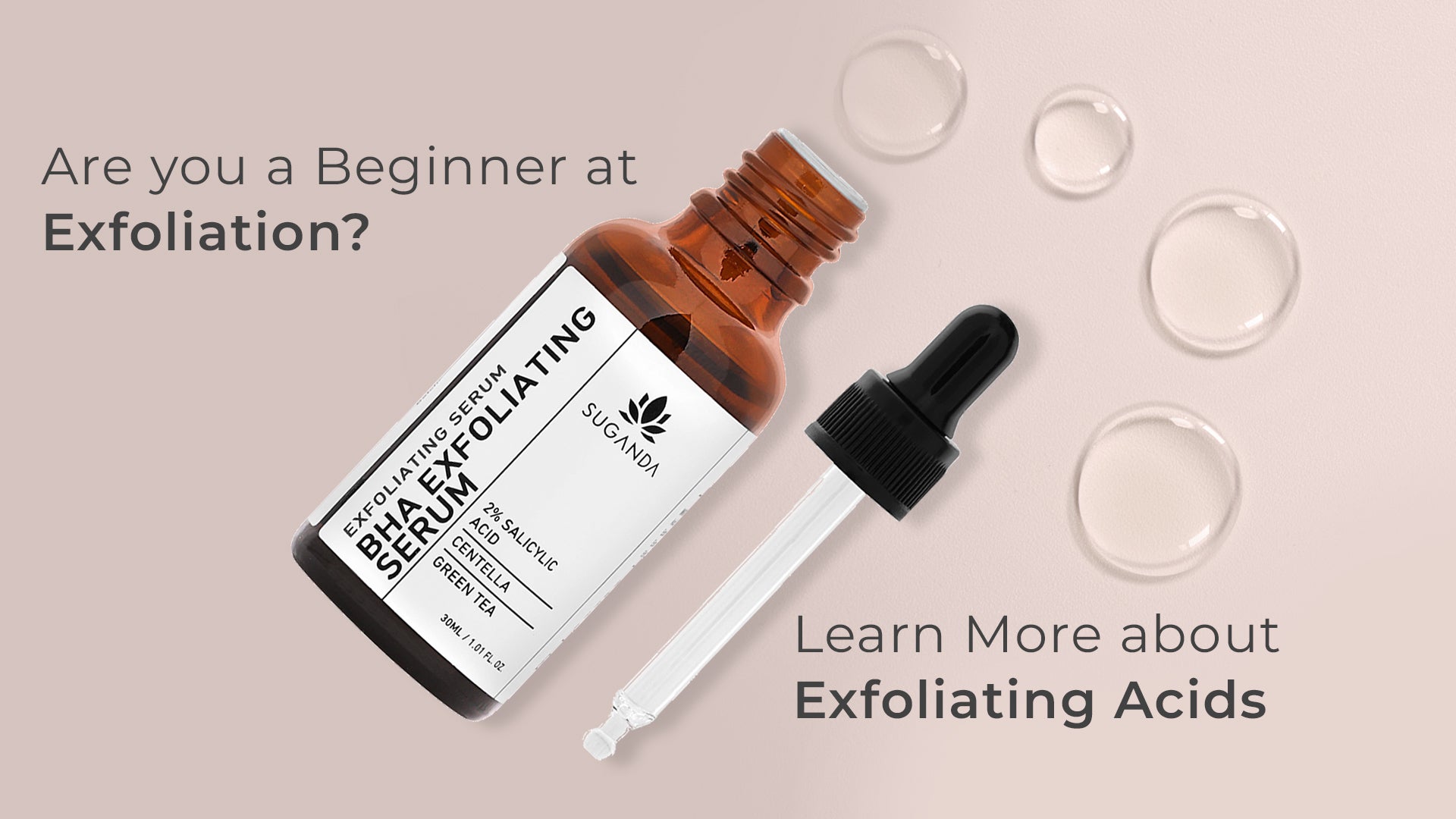If you are a beginner at exfoliation, you’re probably here to understand the process and the benefits of exfoliating skin regularly. Many of you might consider exfoliation an extra step, but little do you know that timely exfoliation is as important as cleaning and moisturizing the skin.
Proper exfoliation makes your skin smooth and even. Furthermore, it helps your skin absorb skin care products easier and quicker. So, keep reading to know why exfoliation is the key and the best ways to perform it.
Why is exfoliation important?
Our skin goes through a continuous renewal process, and the dead skin eventually accumulates on the surface. Basically, exfoliation serves two purposes, which include preventing the formation of comedones (whiteheads and blackheads) and renewing the skin by removing dead and dull skin. As a result, your skin looks bright and fresh after a good scrub.
What are the different types of exfoliation?
Exfoliants can be broadly classified into two categories;
Physical exfoliation
Physical exfoliation refers to rubbing the upper layer of the skin using physical scrubs that include walnut or almond beads. Physical exfoliation removes dead cells, but at the same time, it causes micro-tears on the epidermis of your skin, causing damage.
Chemical exfoliation
Chemical exfoliation is done using exfoliating acids that remove the dead cells gradually. Experts say using chemical exfoliants is much better than physical exfoliants.
Furthermore, chemical exfoliants can be divided into three main categories: AHAs, BHAs, and PHAs. All these categories are acids, and they differ on the basis of their nature and penetrative ability. So, let’s discuss these chemical acids in detail.
Alpha-Hydroxy Acid
Alpha hydroxy acids are made of natural substances derived from sugarcane and apples. The exfoliating agents are gentle on the skin and prevent all sorts of skin irritation. As a result, AHAs suit all skin types.
Alpha hydroxy acids treat bumpy texture, hyperpigmentation, fine lines and dullness. The common AHAs used in skin care products include Glycolic acid, Lactic acid, and Mandelic acids.
Beta Hydroxy Acids
Beta hydroxy acids are known for their anti-bacterial and anti-inflammatory properties, which help treat acne. In addition, BHAs do not just exfoliate the top layer of your skin but are known to effectively penetrate within to target the sebaceous glands. As a result, this exfoliating acid removes the clogged impurities, making your skin look smoother and clearer.
The common BHAs used in skincare products include Salicylic Acid.
Poly Hydroxy Acids
Polyhydroxy acids work exactly as AHAs. However, the PHAs molecules are larger than AHAs, and hence, they fail to penetrate your skin as AHAs do. On the other hand, PHAs are less irritating as compared to other chemical exfoliants.
Use chemical exfoliants according to your skin type
Dry skin
Experts recommend AHA for people with dry skin. AHAs work on the outer layer of your skin, and they help maintain the skin’s moisture. AHAs make your skin look clear, plump, and glowy.
Acne-prone or oily skin
BHAs are highly recommended for acne-prone skin. BHA, specifically salicylic acid, is considered great for controlling breakouts by clearing pores. At the same time, BHAs can make your skin dry, so moisturize it after every exfoliating session.
Sensitive skin
PHAs are considered best for sensitive skin. In addition, an AHA like mandelic acid is also considered mild on sensitive skin. Besides certain AHAs and PHAs, low-concentration BHAs can also be used on sensitive skin because of their soothing properties.
Combination skin
People with combination skin should use a skincare product that perfectly balances AHAs and BHAs. Therefore, a combination of glycolic and lactic acid would be best for you.
The Do’s and Don’ts of chemical exfoliation
Here are the dos and don’ts of chemical exfoliation that’ll help you gain the best results.
Dos
- When you begin with exfoliating acids, do it just once a week.
- People with sensitive or excessively dry skin should consider applying exfoliating serums for just a few minutes in the beginning. Let your skin get used to chemical exfoliants gradually, which will help avoid skin issues.
- Experts suggest using exfoliants in your PM routine.
- If you are using a chemical exfoliant during day time, do not forget to apply sunscreen with a minimum of SPF 35.
- Make sure to do a patch test for 24-48 hours.
Don’ts
- Never try to layer up actives like Retinol or Vitamin C in your exfoliating routine.
- Do not apply chemical exfoliants directly under your eye or eyelids.







 +91 9347578980
+91 9347578980
